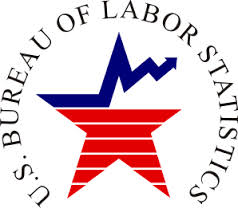Washington, DC…Nonfarm payroll employment rose by 200,000 in January, and the unemployment rate remained at 4.1 percent. Employment continued to trend up in construction, food services and drinking places, health care, and manufacturing. In 2017, employment growth averaged 181,000 per month. Incorporating revisions for November and December, which decreased nonfarm payroll employment by 24,000 on net, monthly job gains have averaged 192,000 over the past 3 months.

Construction employment rose by 36,000 in January, with
most of the increase occurring among specialty trade contractors
(+26,000). The construction sector has added 226,000 jobs over
the past 12 months.
Employment in food services and drinking places continued
to trend up over the month (+31,000). The industry has added
255,000 jobs over the past 12 months.
Health care employment also continued to trend up in
January (+21,000). Employment in hospitals rose by 13,000 over
the month. Job growth in health care averaged 24,000 per month
in 2017.
In January, manufacturing employment continued on an upward
trend (+15,000). Manufacturing has added 186,000 jobs over the
past 12 months. A large share of recent job gains occurred in
the durable goods component, particularly in fabricated metal
products, machinery, and computer and electronic products.
Employment in other major industries–mining, wholesale
trade, retail trade, transportation and warehousing,
information, financial activities, professional and business
services, and government–changed little over the month.
Average hourly earnings of all employees on private nonfarm
payrolls rose by 9 cents in January to $26.74, following an
11-cent gain in December. Over the past 12 months, average
hourly earnings have risen by 2.9 percent. From December 2016 to
December 2017, the Consumer Price Index for All Urban Consumers
(CPI-U) increased by 2.1 percent (on a seasonally adjusted
basis).
The major labor market indicators from the survey of
households continued to show little or no change in January. The
unemployment rate was 4.1 percent for the fourth month in a row.
The number of unemployed people, at 6.7 million, changed little
over the month.
Among the unemployed in January, 1.4 million had been
searching for work for 27 weeks or longer. These long-term
unemployed accounted for 21.5 percent of the total unemployed.
Both the labor force participation rate, at 62.7 percent in
January, and the employment-population ratio, at 60.1 percent,
remained unchanged.
The number of people working part time for economic
reasons, also referred to as involuntary part-time workers, was
about unchanged at 5.0 million in January.
Among those neither working nor looking for work in
January, 1.7 million were marginally attached to the labor
force, little different from a year earlier. Discouraged
workers, a subset of the marginally attached who believed that
no jobs were available for them, numbered 451,000 in January,
also little changed from a year earlier. (People who are
marginally attached to the labor force had not looked for work
in the 4 weeks prior to the survey but wanted a job, were
available for work, and had looked for a job within the last 12
months.)
Following our usual practice, there were routine annual
adjustments to the data from our two surveys. The establishment
survey data released today reflect the incorporation of annual
benchmark revisions. Each year, we re-anchor our sample-based
survey estimates to full universe counts of employment,
primarily derived from the Quarterly Census of Employment and
Wages, which enumerates jobs covered by the unemployment
insurance tax system. The effect of these revisions on the
underlying trend in nonfarm payroll employment was minor.
(Additional information about the benchmark revision and its
impact is contained in our news release and on our website at
www.bls.gov/web/empsit/cesbmart.htm.)
Household survey data for January reflect updated
population estimates from the U.S. Census Bureau. Again this
year, the impact of the new population controls on the
unemployment rate and other ratios was negligible. (Further
information can be found in our news release and on our website
at www.bls.gov/web/empsit/cps-pop-control-adjustments.pdf.)
Summarizing the labor market developments in January,
nonfarm payroll employment rose by 200,000, and the unemployment
rate remained unchanged at 4.1 percent.


